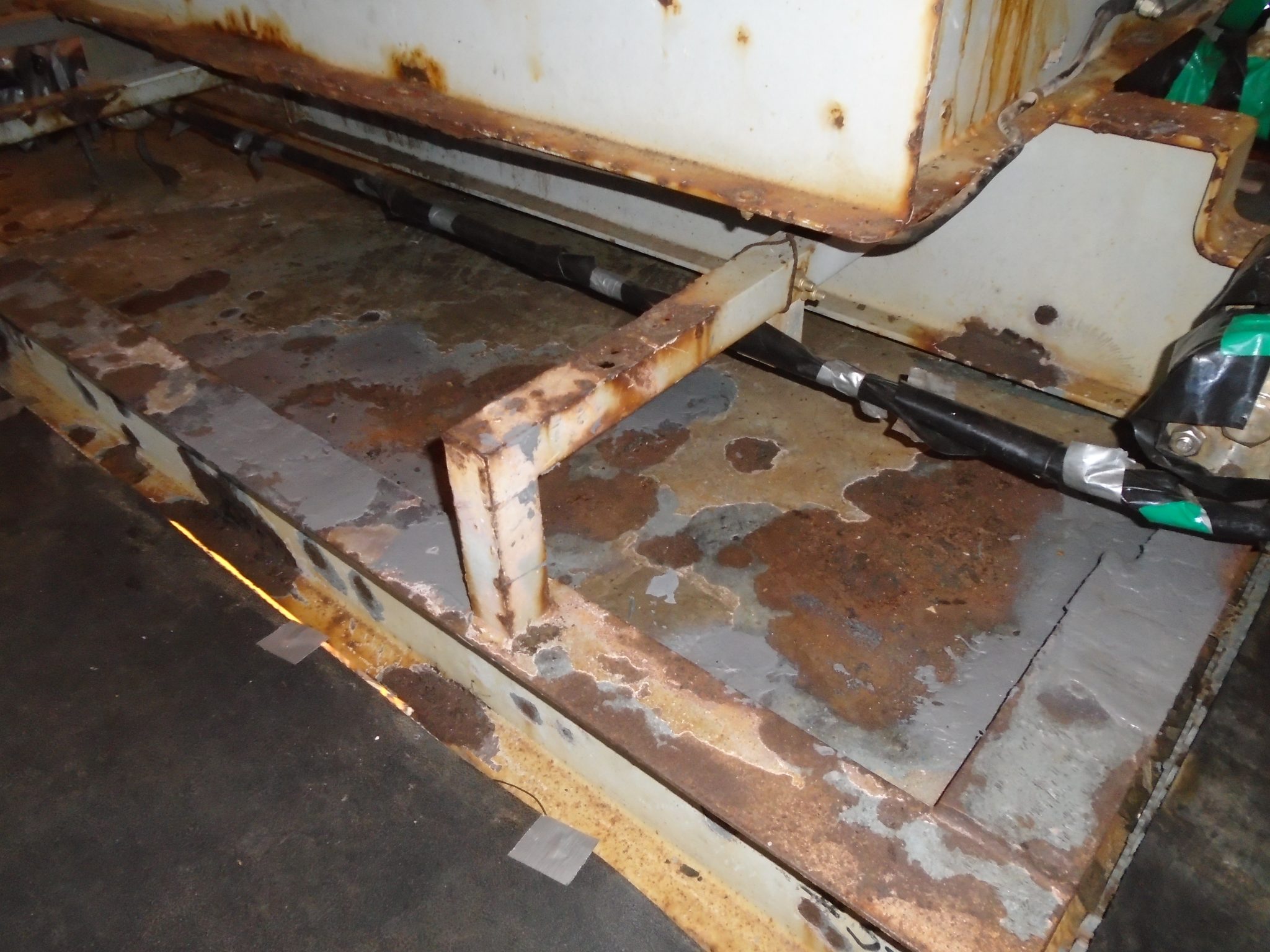Client: Major operator
Location: Freeport, Texas – USA
Scope
During a routine inspection of pipe systems, a large operator based in Freeport, Texas, identified a localised area of external corrosion under tmin on a six-inch carbon steel pipeline in butane service.
The operator contacted ICR looking for a long-term, time-sensitive solution to restore the integrity of this straight pipe without shutting down operations. At the customer’s request, the engineered repair solution required a design life of 10 years. The scope of work included engineering design calculations, a design sketch, and materials.
Solution
ICR collaborated with its rope access installation partner, Acuren, to surface prep the repair area using a bristle blasting method to achieve a cleanliness standard of ST-3, with a minimum surface roughness of 65 microns/2.5 mils.
Considering the condition of the asset and its environment, ICR design engineers calculated the required repair compliance with ISO 24817 using Technowrap™ High Ambient (HA) system and 2K cloth to achieve the required 10-year design life requested by the customer.
Results
The piping was restored and corrosion mitigated thanks to the experience of the Acuren rope access team, and the fast-acting performance of Technowrap™ HA and Technowrap 2K™ which required 24 hours to cure.
Completed with minimal disruption and without shutting down operations, this project illustrated the cost and time advantages of utilising ICR’s composite repair technology over standard replacement methods. Tested and qualified to ISO 24817 and ASME PCC-2 Article 401 standards, and supported by a 30-year track record across multiple sectors, Technowrap™ promises a cost-effective, reliable, and long-term solution for repairs.
For more information on this solution, click here.



Client challenge
Our client, a major Australian energy operator, was experiencing internal corrosion across multiple welds on an 18″ inert-gas header causing pinhole leaks on the duplex line. Another temporary repair method had failed and the client was keen to address the issue in a timely manner.
What we did
Within the design parameters provided by the client, our technical engineers were able to provide an ISO24817 compliant design with a 20-year design life, utilising 5-layers of the Technowrap 2K High-Ambient system. This addressed multiple pinhole leaks across each of the straight, elbow and reducer geometries.
Results
Our technicians were able to provide the engineered repair on the live-line, thus eliminating any downtime for the client. Our technicians were also able to work on each repair area simultaneously without delay, reducing the required time onboard the asset.
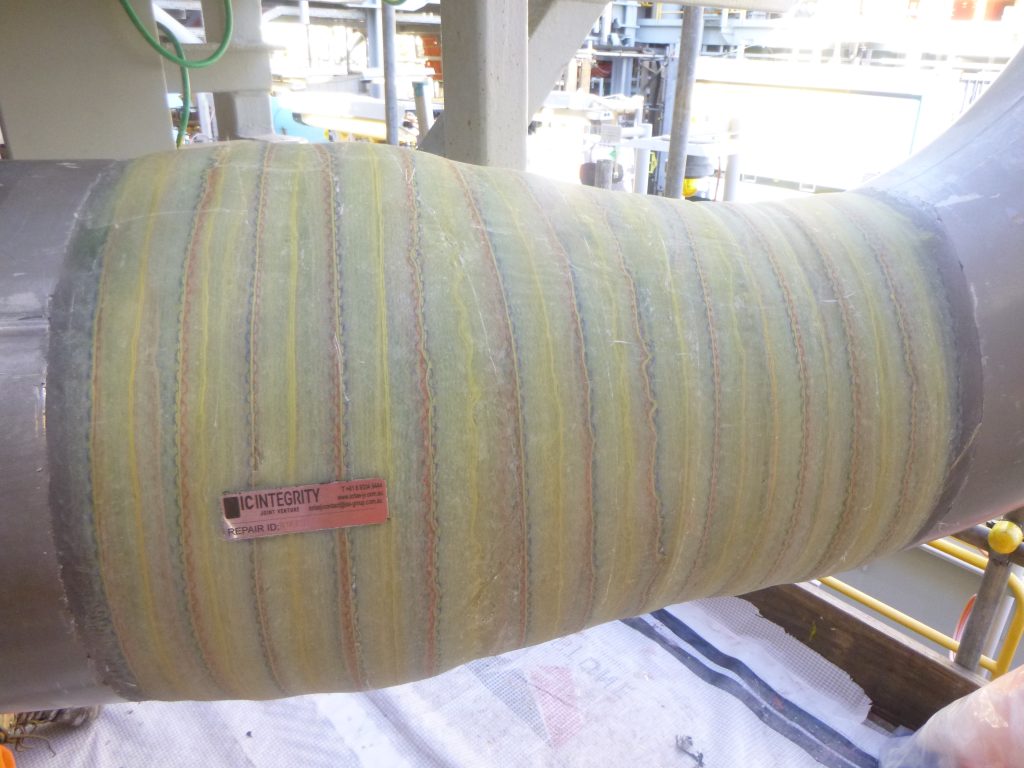
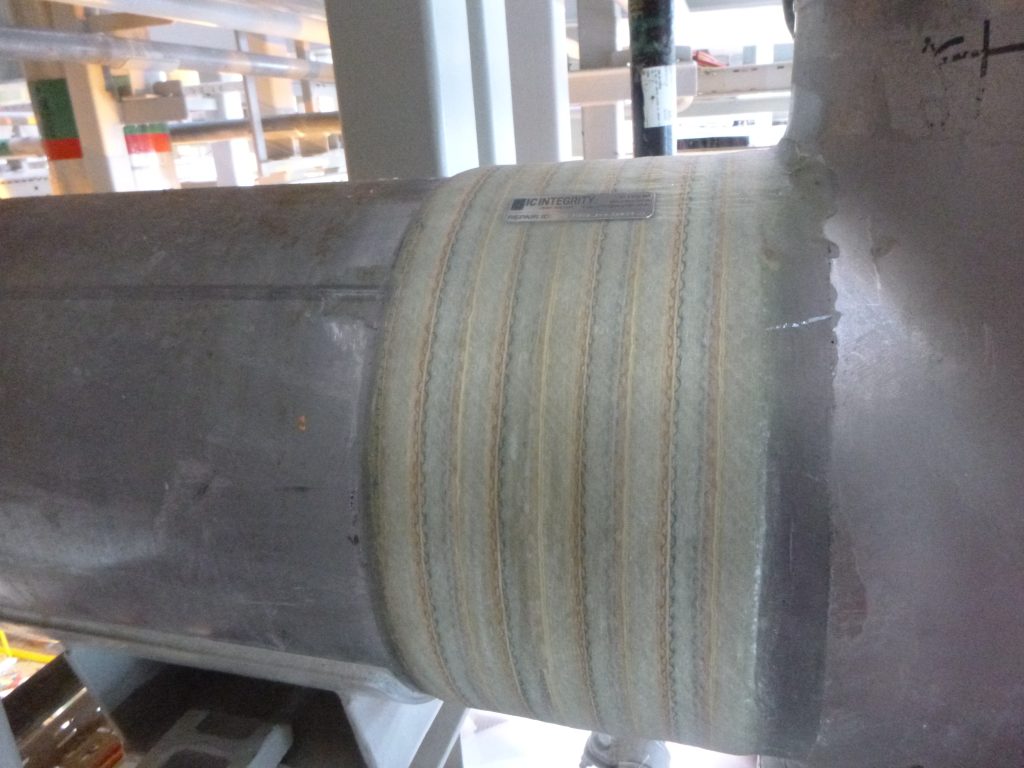
Client challenge
A global energy operator faced a critical challenge with the heli fuel storage and transfer skid on a platform, a crucial component of their operational needs. The skid, constructed from carbon steel was experiencing significant loss due to external corrosion. Our client urgently required a robust solution to address the corrosion issue and restore the integrity of the skid to ensure continued safe and efficient operations.
What we did
We devised a comprehensive strategy to mitigate the effects of corrosion and prolong the service life of the skid. To achieve the required cleanliness for appropriate adhesion levels, our technicians bristle blasted the landing areas to ST3 giving a minimum surface roughness of 40 microns, this was calculated and designed for within the engineering parameters. Our team formulated an engineered design calculation and sketch tailored to the specific requirements of the repair which was reviewed and approved by our client. Drawing upon our extensive experience in structural integrity, we developed a robust repair plan aimed at addressing 2 main areas of concern. The repair solution involved the application of 1 layer of 2K and 8 layers of SRS using ICRs low temperature resin, meticulously executed by our expert team.
As part of the scope of works, we had to fashion a composite mould to bring elements of the structure together in a suitable manner to apply the composite wrap. Our team used Technowrap 2K cloth to create the mould from an intact part of the skid to have the correct angles and dimensions to apply to the sections of concern. This proved paramount in the success of our Technowrap application and bringing back the structural integrity to the Heli-skid.
Results
This repair, achieved a design life of five years with a design temperature of 50 °C, ensuring prolonged serviceability and reliability. The composite repair is designed to withstand the full applied load and axial bending motions which have been calculated and adhered to ensuring the Technowrap engineered repair is compliance with ISO 24817.
Scope
ICR was asked to offer a solution to reinstate a production chemical injection skid pan experiencing localised pitting, wall loss, and through-wall defects of varying sizes. Structural capacity was a minor consideration as loads were small, and the primary goal was to provide containment of fluids.
Solution
ICR proposed two layers of Technowrap 2K™ substrate with Technowrap HA™ (High Ambient) resin, with localised plates over numerous through-wall defects. The repair would fully cover the skid pan and ensure proper pan gradient for draining fluids. The repair was based on a 10 year design life, load of 20psf fluid loading, and a max temperature of 120ºF. The composite repair was designed to share the load with the steel, where it is assumed that this average remaining wall thickness is 0.125” (3.175mm). One challenge during the application was limited space access. The ICR technician fabricated a custom roller with an extension that enabled the Technowrap 2K™ to be applied between the equipment and skid pan catch basin to overcome the cramped working area.
Results
- The repair was engineered with a 10 year defined life
- No hot work required, reducing safety risk
- A cost-effective solution compared with welded replacement
- Carried out with minimal POB requirements
Client challenge
During routine flange maintenance work on a 16” transmission line, our client, a major US operator observed concerning issues with the protective bitumastic wrap. A subsequent inspection revealed the deterioration of the wrap and significant corrosion in the exposed area. Faced with the potential operational and environmental risks, it was essential that this was addressed immediately.
What we did
To mitigate the corrosion risks and extend the life of the affected area, our team implemented an engineered composite repair solution. The pipe underwent meticulous preparation to SP 3 standards, ensuring a clean and suitable surface for the application. Eight layers of Technowrap, designed to provide enhanced protection, were applied to the compromised section of the 16” transmission line.
The decision to opt for an engineered composite wrap aimed to provide a targeted and efficient solution, minimising downtime and avoiding the need for a complete pipeline replacement. This approach also eliminated the necessity for hot works, ensuring a safer and more environmentally friendly execution.
Results
The outcomes of our intervention exceeded expectations, offering several key benefits to our client:
Preservation of the existing line: The implementation of the engineered composite wrap successfully preserved the 16” transmission line, eliminating the need for a costly and time consuming replacement.
Elimination of hot works: The chosen solution avoided the use of hot works, mitigating safety risks and environmental concerns associated with traditional repair methods
Life extension achieved: The application of the engineered composite wrap, comprising eight layers of Tecnhowrap, provided a targeted five-year life extension to the affected area. This ensured the continued reliability and functionality of the transmission line.
This case study underscores the effectiveness of strategic interventions in preserving the integrity of crucial infrastructure.
By choosing an engineered composite wrap solution tailored to the specific challenges faced by the 16” transmission line, we successfully addressed the client’s concerns while delivering long-term benefits in terms of safety, efficiency, and operational continuity.
Client Challenge
A North Sea operator had a platform which was experiencing significant corrosion on the west side stairs. This corrosion threatened the integrity and safety of the stairs, necessitating immediate attention to prevent further deterioration and potential safety hazards. Additionally, five 3” stanchion supports were suffering wall loss due to external corrosion, requiring preventative measures to avoid further damage. The complexity of the project was compounded by weather delays and equipment limitations, which impacted the feasibility of completing all necessary repairs in a single mobilisation.
What we did
To address the challenges posed by the corroded stairs and stanchion supports, we mobilised a team of two skilled rope access technicians to the platform. The repair process was meticulously planned and executed in several stages to ensure comprehensive and lasting results:
Surface preparation: The technicians performed thorough surface preparation to achieve ST3 cleanliness, essential for the effectiveness of the subsequent repair layers.
Primer application: After preparing the surface, a 3K primer was applied to the repair area, forming a strong foundation for the following layers.
Layer application: The technicians applied five layers of our carbon-fibre SRS cloth, combined with a 2K LT resin system (Low Temperature – suitable for North Sea applications). To reinstate full structural support to the gratings placed on top, the underside of the top lip of the beams received ten layers of cloth.
Stanchion support repair: Two layers of 2K LT were applied to the five 3” stanchion supports experiencing wall loss due to corrosion, as these supports had no structural loading.
Results
The repair work carried out resulted in full reinstatement of the integrity and safety of the affected areas. The application of the carbon-fibre SRS cloth and the flexible wet layup process ensured a durable and effective solution to the corrosion problem, despite challenging geometry and access conditions.
Enhanced structural integrity: The under-deck stairs now have restored integrity, with the Technowrap repair providing robust protection against further corrosion. The stairway is now back in use, eliminating the hazard potential for staff on the asset.
Preventive measures: The stanchion supports were effectively safeguarded from further corrosion, extending their operational life and preventing potential future issues.
Additional verification: Due to the structural loadings in the stairway, and the level of wall loss across the beams, a review of the design calculations, repair methodology, and close out reports was carried out by Lloyd’s Register. They
requested additional information on the justification for the design, considering the lifetime of the repair, required loadings and material condition and properties of the staircase and stanchion supports.
The successful review by Lloyd’s Register once again proved the composite wrap solution is valid for structural components and where a cold works solution is needed.
Professional execution: Despite the challenges posed by weather, our technicians completed the critical parts of the project efficiently and to high standards, ensuring minimal disruption to the platform’s operations.
The effective mobilisation and execution of this repair project further highlights our expertise in addressing complex corrosion issues in challenging offshore environments, providing operators with a reliable partner for maintaining their assets.
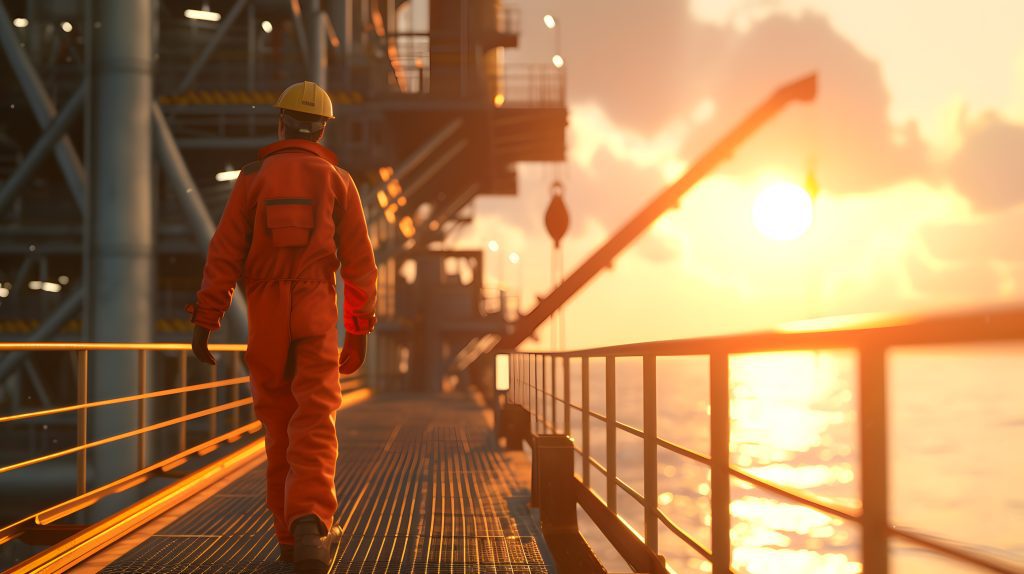


Client: Global operator
Location: Offshore Trinidad & Tobago
Client challenge
In collaboration with local partner H.J. Stauble, our client faced the challenge of providing a cold work solution to refurbish a main deck on an online platform which had multiple areas of corrosion. They required a solution that not only addressed the corrosion issues, but also complied with stringent testing criteria to prove the suitability of the engineered composite repair. The platform’s operational status added an additional layer of complexity to the refurbishment.
What we did
In response to our client’s challenge, we conducted a series of comprehensive tests to validate the effectiveness of the engineered composite repair solution. Impact and lateral restraint testing were crucial aspects. A 400 lbs/ft2 weight was dropped from a 1.2m height onto the test laminate, and the same weight was dragged laterally to assess lateral restraint. These tests were repeated 10 times. Among the four composite repair bidders, our deck repair solution emerged as the only one to withstand the full drop and lateral restraint testing without disbondment, leading to the award of the scope of work.
The selected solution involved various design methodologies based on loading requirements provided by the client. This ranged from 2 to 6 layers of our Technowrap™ DRS repair system. Grit blasting was employed for surface preparation, ensuring SA2.5 cleanliness.
Results
The implementation of the Technowrap™ DRS repair system resulted in several positive outcomes:
Restoration of deck integrity: The main deck’s integrity was successfully restored, addressing the multiple areas of corrosion.
Compliance with applied load/pressure: The repaired deck areas complied with an applied load/pressure of 400 lbs/ft2, meeting the client’s stringent requirements.
Enhanced damage tolerance: The inclusion of rubber-toughened nano particles in the DRS resins contributed to increased damage tolerance, ensuring long-term durability.
Engineered design life: All repaired deck areas were designed with an engineered lifespan of 10 years, providing a reliable and sustainable solution.
Timely Installation with No Production Impact: The repairs were installed without delays, and the process had no impact on ongoing production activities.
No heavy lifting or steel components: The cold work solution involved no heavy lifting or the addition of steel components, minimizing logistical complexities.
The successful application of the Technowrap™ DRS repair system not only addressed the corrosion challenges on the main deck but also showcased its resilience through rigorous testing, providing the client with a reliable, durable, and non-disruptive solution.
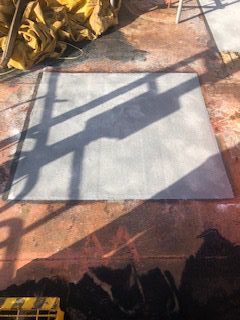
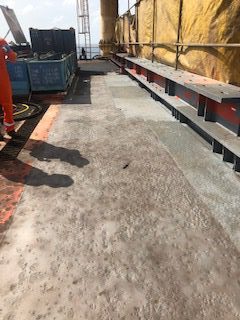
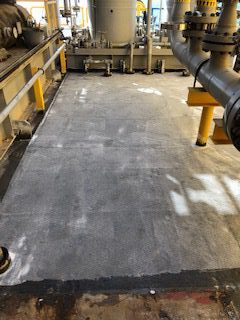
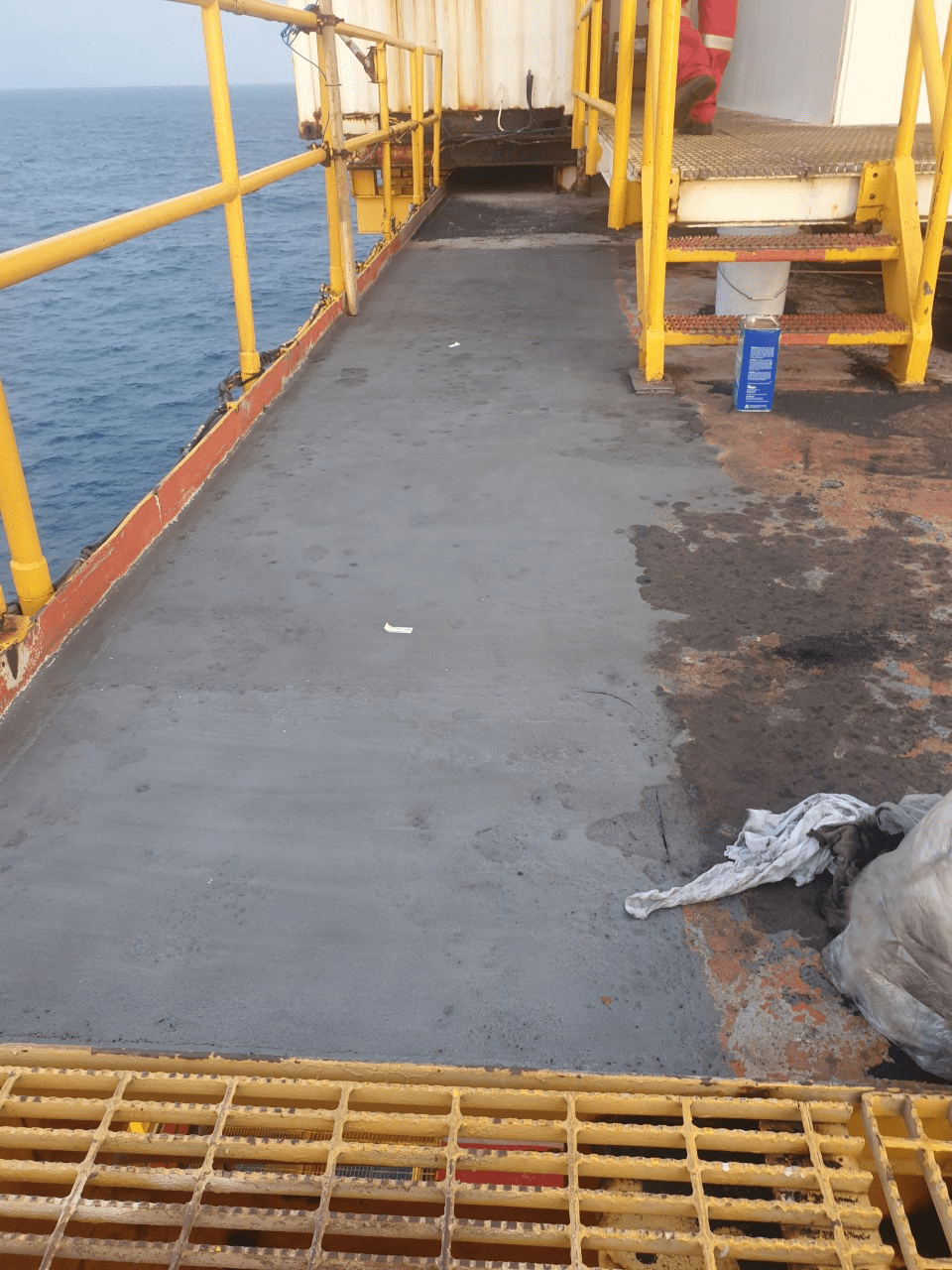
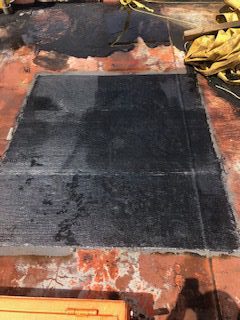
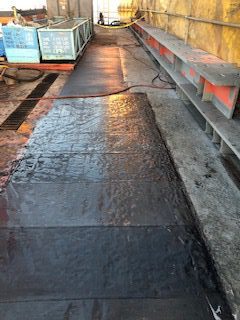
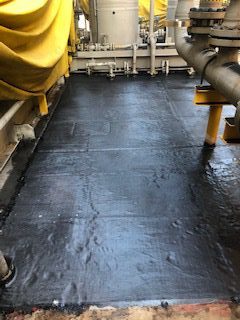
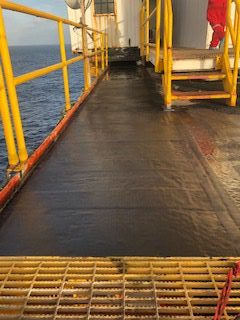
Client: Global Supermajor Operator
Location: Gulf of Mexico
Client challenge
Onboard a supermajor’s platform, a logging support deck plate was identified to be suffering from external corrosion and various through-wall defects. Four distinct areas of the logging plate deck required immediate attention and composite repairs. The challenge was to address the corrosion issues and through-wall defects, ensuring the deck’s integrity and functionality.
What we did
Following a thorough engineering assessment, we proposed a comprehensive solution involving the application of four layers of Technowrap™ Structural carbon fiber combined with the DRS resin system over the identified defect areas. The design challenge was twofold – to ensure sufficient strength within the repair to withstand applied loads and to incorporate impact tolerance to withstand potential dropped objects. We developed a unique design methodology using rubber-toughened epoxy, providing the necessary strength, stiffness, and impact tolerance.
Results
The implementation of the Technowrap™ DRS repair solution resulted in successful outcomes and significant benefits:
Smooth application without delays: The application of Technowrap™ DRS proceeded as planned, without any delays. This efficiency minimized downtime and operational disruptions.
Restored deck integrity: The composite repair successfully restored the integrity of the logging support deck plate, addressing external corrosion and through-wall defects. The repaired areas were brought back to their original strength and functionality.
20-year defined lifetime: The engineered solution ensured the deck’s integrity for a defined lifetime of 20 years. This long-term reliability provided the client with assurance and sustainability.
The application of the Technowrap™ DRS repair system not only addressed the immediate challenges posed by external corrosion and through-wall defects but also provided a durable, impact-tolerant solution with a 20-year defined lifetime. This case study highlights the effectiveness of innovative composite repair methodologies in extending the lifespan and functionality of critical infrastructure in offshore environments.
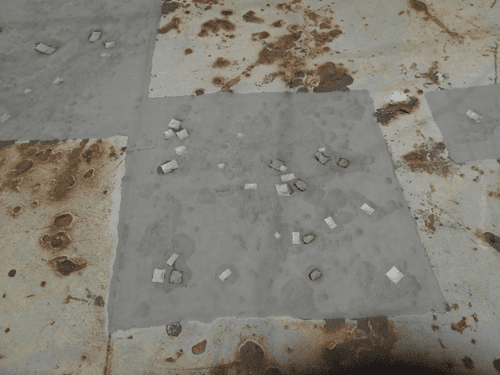
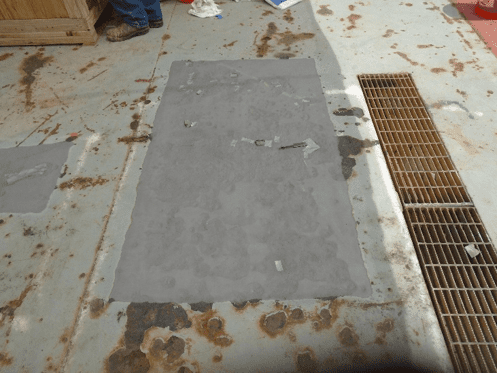
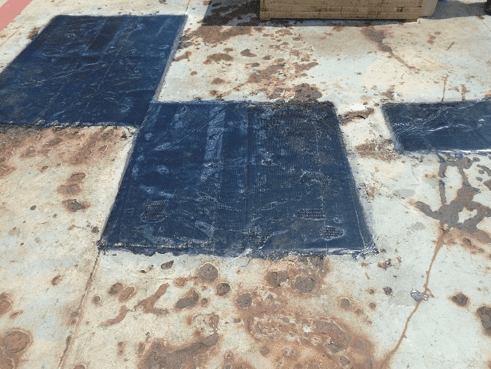
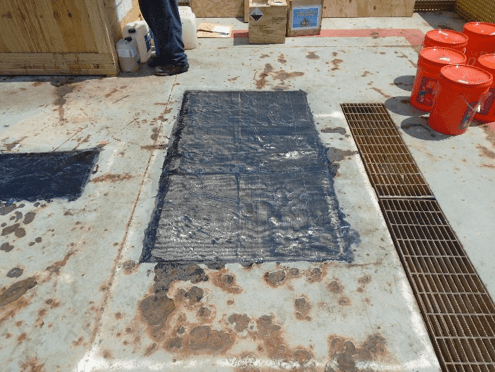
Client: Major operator
Location: US – Texas Eagle Ford Basin
Client challenge
During routine flange maintenance work on a 16” transmission line, our client observed concerning issues with the protective bitumastic wrap. A subsequent inspection revealed the deterioration of the wrap and significant corrosion in the exposed area. Faced with the potential operational and environmental risks, it was essential that this was addressed immediately.
What we did
To mitigate the corrosion risks and extend the life of the affected area, our team implemented an engineered composite wrap solution using WTR 12068. The pipe underwent meticulous preparation to SP 3 standards, ensuring a clean and suitable surface for the application. Eight layers of Technowrap, designed to provide enhanced protection, were applied to the compromised section of the 16” transmission line.
The decision to opt for an engineered composite wrap aimed to provide a targeted and efficient solution, minimizing downtime and avoiding the need for a complete pipeline replacement. This approach also eliminated the necessity for hot works, ensuring a safer and more environmentally friendly execution.
Results
The outcomes of our intervention exceeded expectations, offering several key benefits to our client:
Preservation of the Existing Line: The implementation of the engineered composite wrap successfully preserved the 16” transmission line, eliminating the need for a costly and time-consuming replacement.
Elimination of Hot Works: The chosen solution avoided the use of hot works, mitigating safety risks and environmental concerns associated with traditional repair methods.
Life Extension Achieved: The application of the engineered composite wrap, comprising eight layers of Tecnhowrap, provided a targeted five-year life extension to the affected area. This ensured the continued reliability and functionality of the transmission line.
This case study underscores the effectiveness of strategic interventions in preserving the integrity of crucial infrastructure. By choosing an engineered composite wrap solution tailored to the specific challenges faced by the 16” transmission line, we successfully addressed the client’s concerns while delivering long-term benefits in terms of safety, efficiency, and operational continuity.
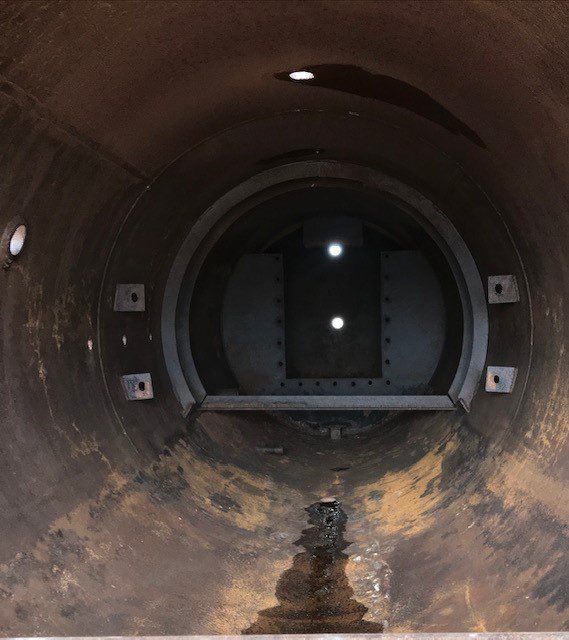
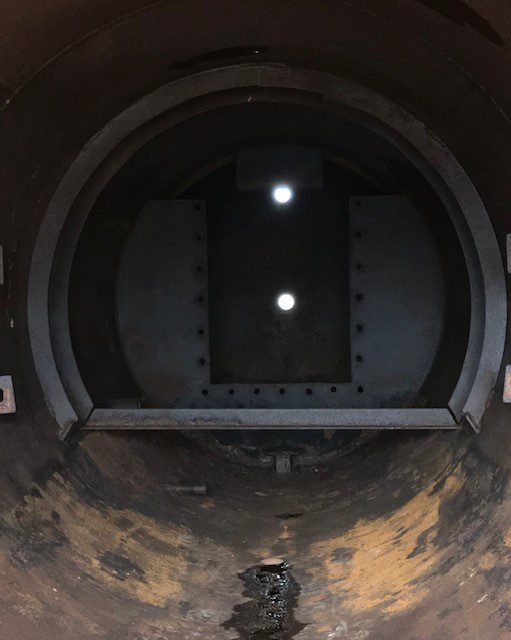
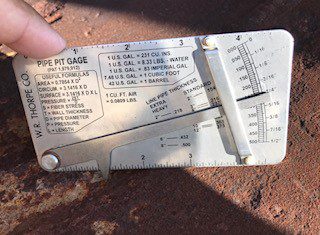
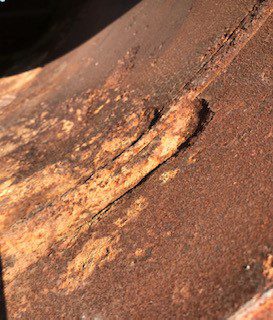
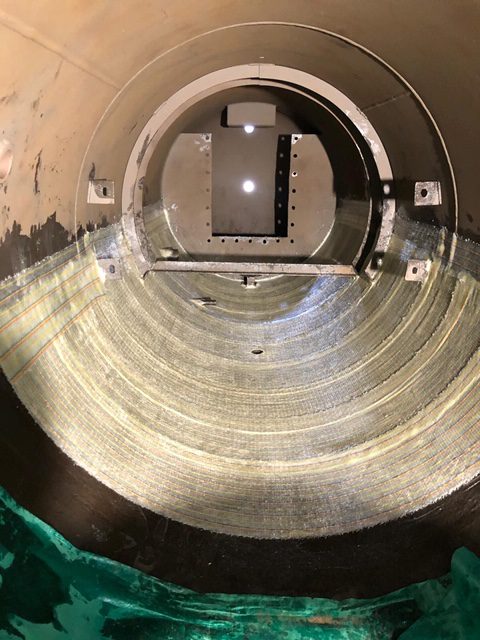
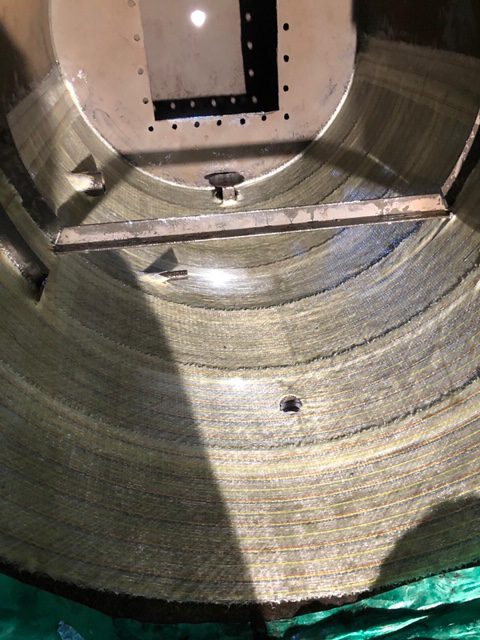
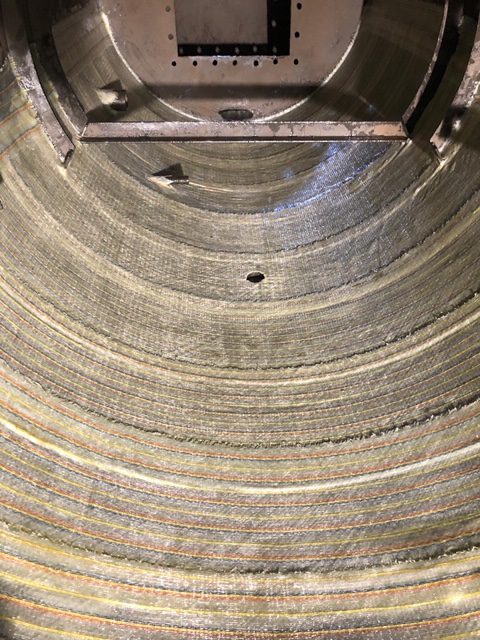



Client challenge
A client approached our team with a critical challenge involving the production chemical injection skip pan, which was experiencing localized pitting, wall loss, and through-wall defects of varying sizes. While structural capacity was a minor consideration due to small loads, the primary goal was to reinstate the skip pan’s integrity to ensure effective containment of fluids. We were was tasked with providing a solution that addressed the defects and maintained the production process’s reliability.
What we did
In response to the client’s challenge, we devised a comprehensive solution to rehabilitate the production chemical injection skip pan. The proposed repair involved the application of two layers of Technowrap 2K™ substrate with Technowrap HA™ (High Ambient) resin, supplemented by localized plates strategically placed over the through-wall defects. The repair covered the entire skip pan, ensuring the proper pan gradient for fluid drainage. With a design life of 10 years, a fluid loading of 20 psf, and a maximum temperature of 120ºF, the composite repair was engineered to share the load with the existing steel structure, assuming an average remaining wall thickness of 0.125” (3.175mm).
One notable challenge encountered during the application was limited space access which we overcame by fabricating a custom roller with an extension. This innovative solution enabled the application of Technowrap 2K™ in the cramped working area between the equipment and the skip pan catch basin.
Results
The implemented composite repair solution yielded positive results and notable benefits:
10-Year Defined Life: The repair was engineered to provide a 10-year defined life, ensuring the longevity and reliability of the skip pan.
Safety and Compliance: No hot work was required during the repair process, significantly reducing safety risks and ensuring compliance with stringent safety standards.
Cost-Effective Alternative: The composite repair solution proved to be a cost-effective alternative when compared to the traditional approach of welded replacement, providing significant cost savings for the client.
Minimal Personnel Onboard (POB) Requirements: The repair was executed with minimal POB requirements, contributing to operational efficiency and cost-effectiveness.
In conclusion, our innovative composite repair not only addressed the client’s challenges related to the production chemical injection skip pan but also provided long-term reliability, safety, and cost-effectiveness. This case study highlights the adaptability of composite repair solutions in overcoming complex challenges in industrial settings.
